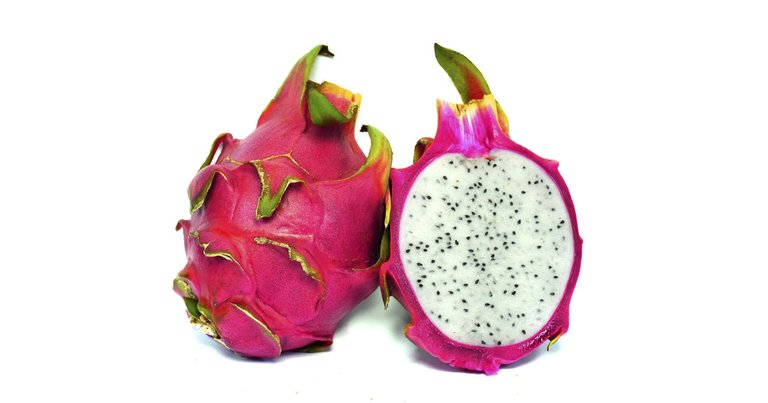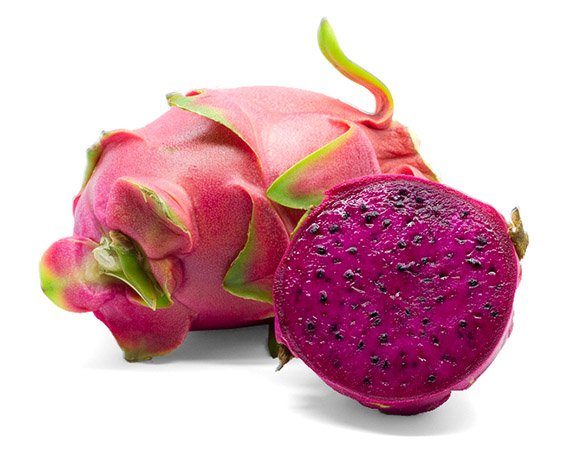Welcome to #SublimeSunday, a tag presenting you with the unique opportunity to post something a bit different, wacky, crazy or just whatever takes your fancy, initiated by @c0ff33a ☕️
And also #BeautifulSunday initiated by @ace108

A pitaya, or pitahaya is the fruit of several different cactus species. Pitaya usually refers to fruit of the genus Stenocereus while pitahaya refers to fruit of the genus Hylocereus - both in the family Cactaceae.
These fruits are commonly known in English as "dragon fruit", a name used since around 1963, apparently resulting from the leather-like skin and prominent scaly spikes on the fruit exterior. In some places, the fruit is also be known as a strawberry pear.
The dragon fruit is cultivated in Southeast Asia, and throughout tropical and subtropical regions in the world. Hylocereus (the plant that bears dragon fruits) has adapted to live in dry tropical climates with a moderate amount of rain. The dragon fruit sets on the cactus-like trees 30–50 days after flowering, and can sometimes have 5-6 cycles of harvests per year.
Overwatering or excessive rainfall can cause the flowers to drop and the fruits to rot.

Source
There are, apparently, three colours of Dragon fruits, but I have only seen two colours – white and red.

Source

Source
The fruit's texture is sometimes likened to that of the kiwifruit because of its black, crunchy seeds. Dragon fruit is supposedly very nutritious and good for the health. They are used to flavor and colour juices and alcoholic beverages. The red and purple colors of Hylocereus fruits are due to betacyanins, a family of pigments that includes betanin, the same substance that gives beets their red colour. You wouldn’t want to get any of the dyes on your clothes. It would be a pain to get them off. The flowers are said to be edible, or they can be steeped as tea.
I saw these cacti in one of the community gardens in the park some time ago. I had assumed they were just some cacti plant and didn’t pay much attention to it.

Later on, I saw their blooms. Upon a closer look, I saw that there were a couple of young dragon fruits. It was then that I realised they were the cacti plants that bear dragon fruits. I hadn't realized that dragon fruits can be grown in Singapore climate.





 ^^^^^^^^^^^^^^^^^^^^
^^^^^^^^^^^^^^^^^^^^Thank you for stopping by. If you like the post, please give it a vote. Reblog it if you think it worthy. Follow me if you like to read about Life, humour and quotes. Cheers!
Looks like HortPark. I heard the skin of this can be eaten
It's a section of the community garden in Choa Chu Kang Park. I do not know if the skin can be eaten. Usually, we only eat the flesh.
I search a bit and found some said can be eaten but I guess I won't eat the outside part it.
If it's kiwi from NZ, I will eat it with the skin.
I guess there is no harm in eating the skin if it is properly washed. But I think eating the flesh with the skin will spoil the enjoyment of the flesh. :-)
Love this Dragon fruit and love the flowers it grows before the fruit 👍
I have only seen this plant recently.👍😄
Really here in Thailand it is a plant seen quite often very popular over here.
I see. Wonderful. :-)
Thank you @innerblocks. I appreciate your support.